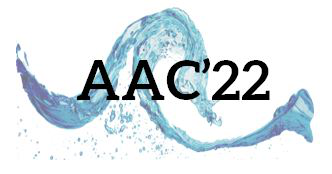Speaker
Description
The goal of the E-324 experiment ("Optical visualization of e-beam-driven wakes") at SLAC's 2nd-generation Facility for Advanced Accelerator Science and Experimental Tests (FACET-II) is to observe and understand electron- and ion-density structures that arise during, and at delays up to ~ms after, e-beam-driven production of strongly nonlinear plasma wakefields. The current set-up interrogates the plasma with a probe pulse (𝜆 = 0.8 µm, 50 fs) that is temporally synchronized with the 10 GeV e-beam driver and impinges on the wake at grazing angle 𝜃 < 1˚ to its propagation direction, thereby achieving high-sensitivity to structures of density $n_e \leq 10^{16}$ cm$^{-3}$. Recent time-resolved diffractometry measurements with this setup have identified the principal physical mechanisms, and quantified the dominant dynamical pathways, by which nonlinear wakes release their stored electrostatic energy into the surrounding plasma on ps to ns time scales [1], and have bench-marked large-scale simulations of these dynamics [2]. Clear optical signatures of residual plasma heat at tens of µs delays have been observed [1], well beyond the ~60 ns "lower limit" plasma recovery time determined by 2-pulse wake excitation measurements alone [3]. Full understanding of this recovery time is essential to designing future high-luminosity plasma-based accelerators. We will also discuss current efforts to simulate and detect warm hollow-channel ion-density structures that form within tens of ps following nonlinear wake excitation, and that are promising for plasma-based positron acceleration [4].
[1] R. Zgadzaj et al., “Dissipation of electron-beam-driven plasma wakes,” Nature Commun. 11, 4753 (2020).
[2] V. K. Khudyakov, K. V. Lotov and M. C. Downer, "Ion dynamics driven by strongly nonlinear plasma wake," Plasma Phys. Control. Fusion 64, 045003 (2022).
[3] R. D'Arcy et al., "Recovery time of a plasma-wakefield accelerator," Nature 603, 58 (2022).
[4] T. Silva et al., "Stable positron acceleration in thin, warm, hollow plasma channels," Phys. Rev. Lett. 127, 104801 (2021).
Acknowledgments
Work is supported by NSF grant PHY-2010435 and U. S. DoE grant DE-SC0011617.

